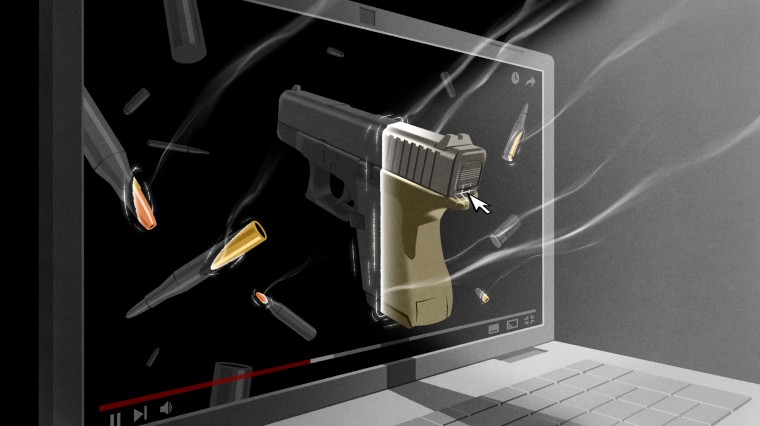Authorities investigating a man suspected of trafficking “ghost guns” in September tailed a white GMC truck to a Home Depot parking lot in New Jersey, closing in as he left the store.
Inside his truck, investigators found more than a dozen “ghost gun” kits, which authorities say can be built into functioning, untraceable firearms within hours — or even minutes.
The man, William R. Pillus, 23, whose attorney declined to comment, is accused of planning to build the kits into 9 mm handguns and sell at least some of them, according to a state indictment in New Jersey. In his basement apartment in Lincoln Park, authorities found an AR-style “ghost” rifle and handwritten instructions for how to build handguns.
The source of Pillus’ gun-building knowledge, authorities allege: YouTube.
The internet has made the proliferation of homemade weapons a vexing problem for law enforcement officials across the country, who have linked them to mass shootings, attacks on police and drug and gang killings in recent years.
More than three years after YouTube tightened its gun content restrictions, an NBC News review found dozens of videos, with more than 4.6 million combined views, showing how to assemble “ghost guns,” which remain largely unregulated in most states and are nearly impossible to trace because they lack serial numbers.
NBC News sent links to six videos — which combined accounted for more than 1.2 million hits — to YouTube’s parent company, Google, seeking comment on how it enforces its firearms policy. YouTube removed the videos within hours and said users have to comply with guidelines prohibiting videos that show how to make firearms.
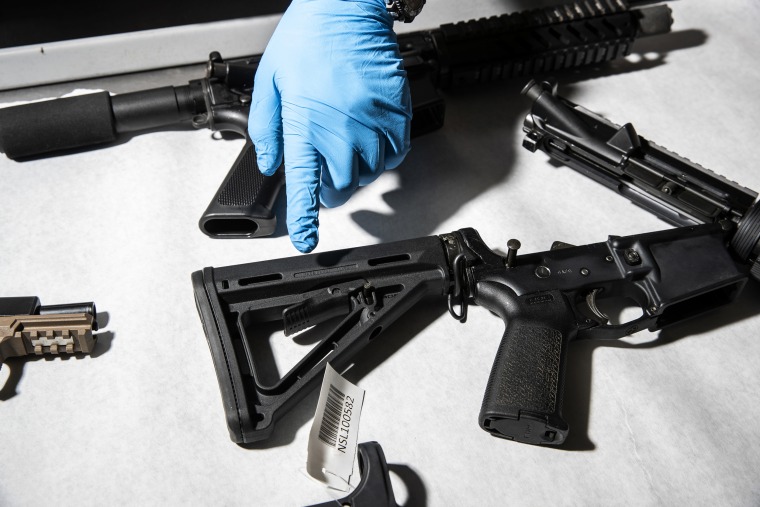
But dozens of similar videos remain on the site — some on the same channels as the ones YouTube took down. The videos were posted from 2013 to 2021, and they have drawn more than 1,000 views to more than half a million.
The availability of videos on YouTube showing how to build guns alarmed some former law enforcement officials and gun control advocates, who called for the company to more proactively police its platforms.
“What does it say about your corporate moral leadership if you cannot live up to your own corporate ideals?” said MSNBC analyst Jim Cavanaugh, a former special agent with the federal Bureau of Alcohol, Tobacco, Firearms and Explosives, or ATF. “It’s really kind of sad, if you think about it.”
YouTube said in a statement that, with more than 500 hours of content being uploaded to the site every minute, it largely relies on “advanced machine learning” and reports from users to flag videos that may violate its policies. Employees then review the videos to determine whether they should be removed.
In 2019, The Trace, a nonprofit news organization that focuses on gun violence, found that YouTube hosted videos about how to build 3D-printed guns that violated its policies. The Trace said that it flagged several videos through YouTube’s mechanism for reporting policy violations but that the company removed the offending videos only after The Trace contacted it directly.
“It’s surprising to me that YouTube wouldn’t be looking at this more closely and enforcing a rule that they themselves set,” said Jim Burch, the president of the National Police Foundation, a nonpartisan law enforcement think tank.
“They can’t possibly be asleep at the wheel on this,” he added.
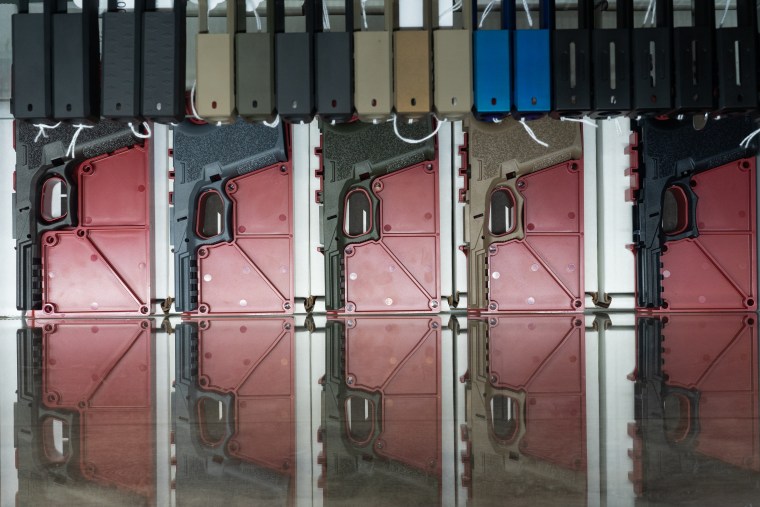
Authorities: Ghost guns are the ‘weapon of choice’
Ghost guns are particularly problematic for law enforcement agencies because they are sold in parts, typically including an unfinished frame, a separate trigger mechanism and a barrel. For that reason, they aren’t technically considered firearms under federal law. That means buyers can bypass background checks, giving criminals who are banned from owning firearms access to guns. And the parts are sold without serial numbers, which the federal government uses to track weapons involved in crimes, making the handmade guns almost impossible to trace.
The kits often require only minor modifications — drilling holes and sanding parts — to make them functioning firearms. As part of an investigation into Polymer80, a leading manufacturer of the kits, federal agents and a confidential informant used YouTube videos to learn how to assemble them. The informant beat the agent’s time, building a functioning firearm in just 21 minutes.
“These have become the weapon of choice for criminals,” Pennsylvania Attorney General Josh Shapiro warned in October after the arrest of Pillus, who faces five counts in connection with firearm charges, according to a New Jersey indictment unsealed in October.
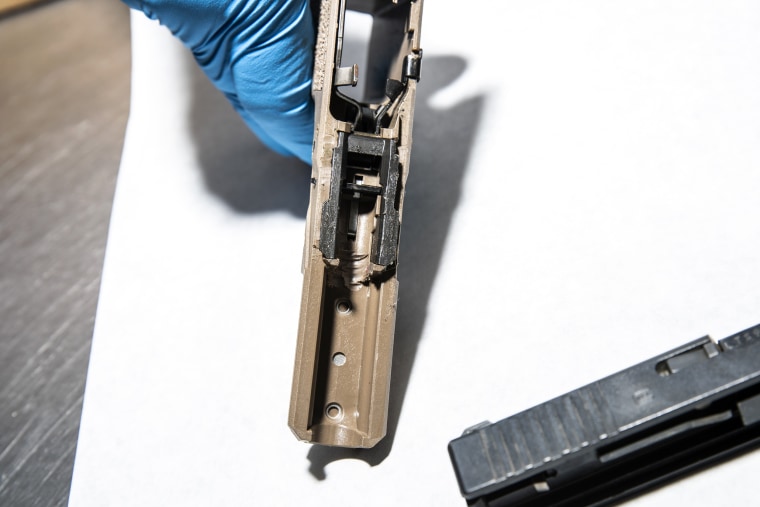
Shapiro pointed to Pillus’ case as evidence that better federal regulation is urgently needed, saying the number of ghost guns involved in crimes has exploded in his state. The Philadelphia Police Department recovered 389 in the first eight months of 2021 — up from just 95 in all of 2019.
National data on ghost guns are incomplete, at best. ATF estimates that police recovered 10,000 privately made firearms in 2019. In some cities, the numbers are rising quickly. In New York City, the number seized by police jumped from 48 in 2019 to about 200 from the start of this year through mid-November.
In response, the Biden administration recently proposed a federal rule that would regulate the sale of homemade gun kits like all other firearms, requiring buyers to pass background checks and forcing manufacturers to add serial numbers to the parts. But the rule is still pending.
In the meantime, some states and cities — including New Jersey and Los Angeles — have passed their own laws banning ghost guns or requiring buyers to register them once they’re built.
But the laws aren’t focused on how people learn to build guns, leaving it up to online platforms to police themselves.
Garen Wintemute, the head of the Violence Prevention Research Program at the University of California, Davis, said videos showing how to build guns facilitate their production and should be a wake-up call for YouTube and other platforms to do a better job policing content.
“What YouTube and others need to consider is what complicity and what accountability do they face if they continue to allow that information to be provided, given the purposes for which it’s being put out,” Wintemute said.
Gun supporters: Policy too restrictive
But Second Amendment supporters say YouTube already aggressively enforces its rules and charge that it has gone too far in restricting firearm content. Some former YouTube users have moved to more niche alternative sites, such as Odysee or GunStreamer.
“YouTube’s restrictions are keeping gun owners, especially the more than 11 million first-time gun buyers over the past two years, from accessing information that will help to teach safe and responsible firearm ownership and storage,” said Mark Oliva, the director of public affairs for the National Shooting Sports Foundation, which represents the firearms industry.
Oliva said the foundation “supports the use of videos that demonstrate the lawful and safe use of firearms, including those firearms that are built in the home by those within their lawful right to possess firearms.”
“P80 Ralph,” who declined to provide his full name, runs a YouTube channel dedicated to making untraceable guns at home. In a video interview set up through the email account attached to his YouTube channel, Ralph said his curiosity was piqued when a co-worker showed him a picture of an AR-style rifle he’d built. He wondered, “How the hell do you build a gun?”
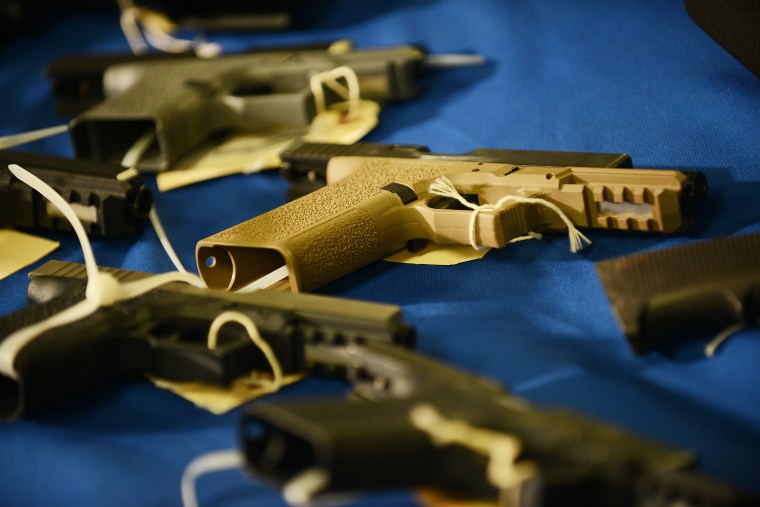
“So I went on YouTube. Tons of videos showing how to do it,” he said. “And I realized that it was a hobby. People do this for fun.”
At first, Ralph said, he worried that people might do something bad with guns they had built after watching his videos. But he said he believes the Constitution gives people a right to bear arms — not just for hunting or self-defense, but also “to stand up against a tyrannical government.”
“Whoever is in charge of the whole thing here, this United States, they don’t want the knowledge out there,” he said. “They don’t want people to have firearms. They want the control. They want to be able to have power over everyone.”
One of Ralph’s videos was removed from YouTube after NBC News’ inquiry. He said he has been warned in the past and had other videos taken down. The platform also demonetized most of his content — even videos that aren’t about guns, he said.
But some gun control advocates insist that YouTube doesn’t go far enough. On Wednesday, the advocacy group Everytown for Gun Safety sent a letter calling on YouTube to better enforce its community guidelines.
“While law enforcement agencies like the FBI and ATF are working to curb this problem, it is imperative that YouTube work harder and smarter to monitor and regulate ghost-gun-related content,” the letter said. (YouTube didn’t immediately comment on the letter.)
Vincent Gazzani was one of several people shot by a man wielding a ghost gun in San Diego on April 22. Hit in the arm and chest, he nearly died. He has become an advocate for banning ghost guns, volunteering for the gun control groups Everytown for Gun Safety and Moms Demand Action.
Gazzani, 27, who lives in New Jersey, said he’d like the YouTube videos to be taken down. Doing so wouldn’t curb the spread of ghost guns, he said, but it might make it less likely that someone with bad intentions would be inspired to build one.
“Marketing ghost guns is just as bad as selling them,” he said.
